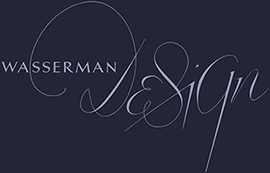
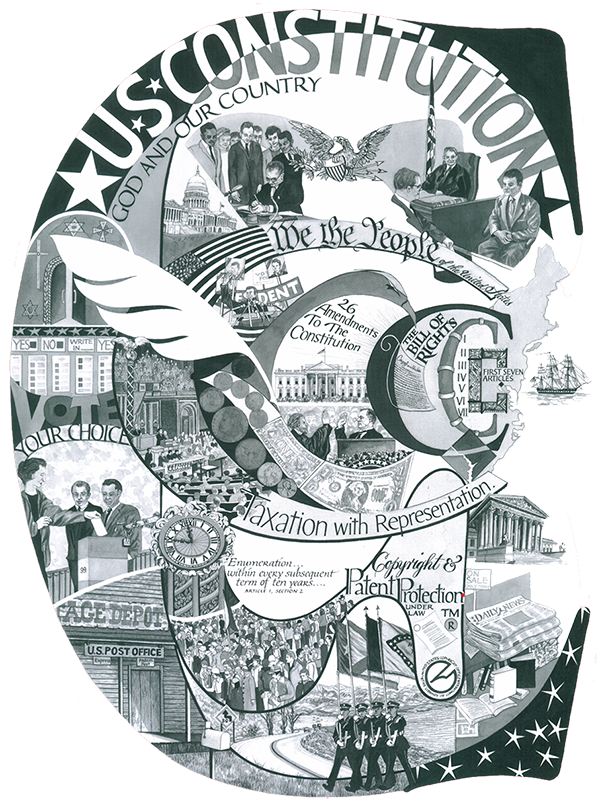
Since the founding of the
United States of America
250 years ago, the people of
this nation have achieved
critically important
endeavors of lasting value
which continue to benefit
all of American society.
Constitution of the United States
Modern illumination. 1991
Black watercolor. 37 x 49 inches, framed
Exploration
Wonder for the known;
what does it mean
to explore?
Modern illumination
1991. Black watercolor
36 x 44 inches, framed
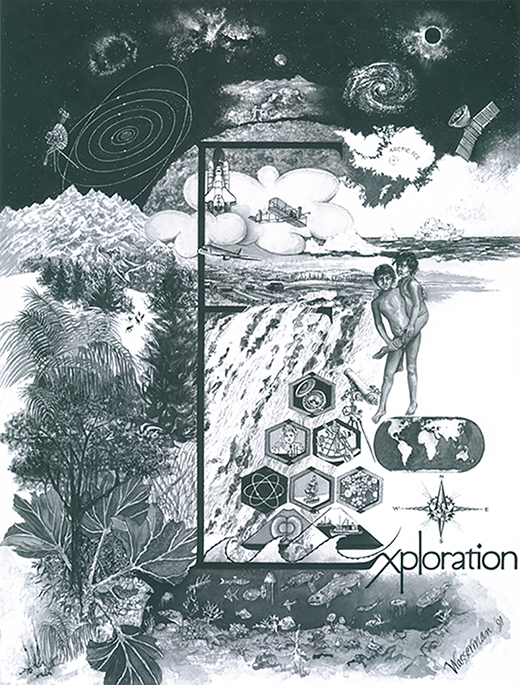
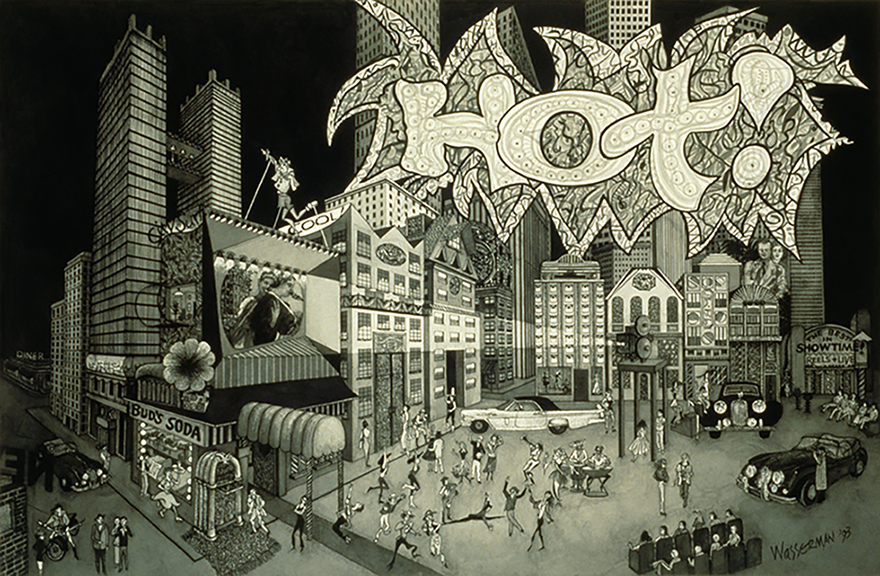
Hot!
Let us enjoy our time, tonight. Our
day's work is done, and we're in the city among
friends and neighbors. Alhough dark skies are
overhead, the public square is bright beneath
the moonlight towers
Cities reflect their times. Until the
1860s, most people in the United States dwelled
in rural settings and on family farms. Then, from
1876 to 1912, the number of U. S. inhabitants
increased by 67.5 million persons. Tens of
thousands of pioneers moved out West to settle
and farm the lands; others went in search of
gold. But, most men and women moved off of
their farms to take jobs in the cities
Modern illumination work of art about
six seminal scientific inventions
1) electric light bulb
2) wireless telegraphy
3) motion picture projection camera
4) phonograph recording machine
5) automobile production assembly line
6) engineering and construction
of the skyscraper
All became viable, commercial
successes from the mid-19th
century, onward
Black watercolor painting. 1993
52 x 39 inches, framed
Sound in movement
Dance
Modern + tap forms
emerging in tandem
with the blues +
jazz musical expression
of a subject, or theme
through fragmentary
impressions
Modern illumination. 1992
Black watercolor painting
39 x 53 inches, framed
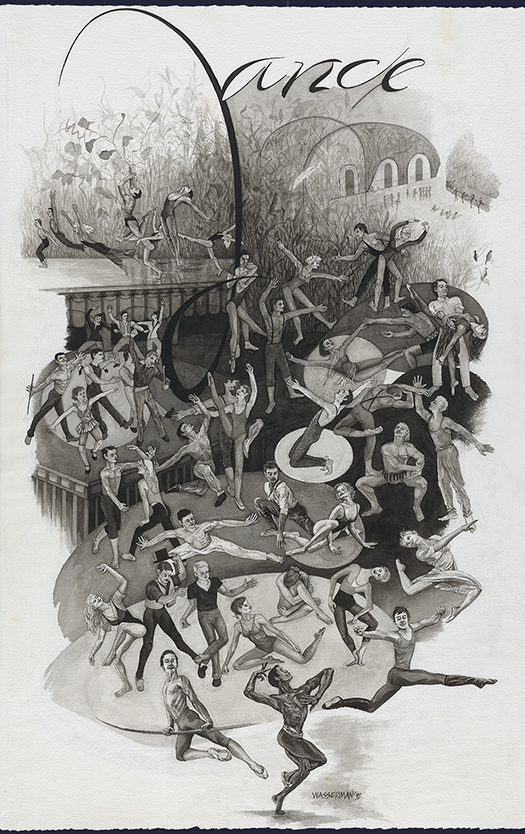
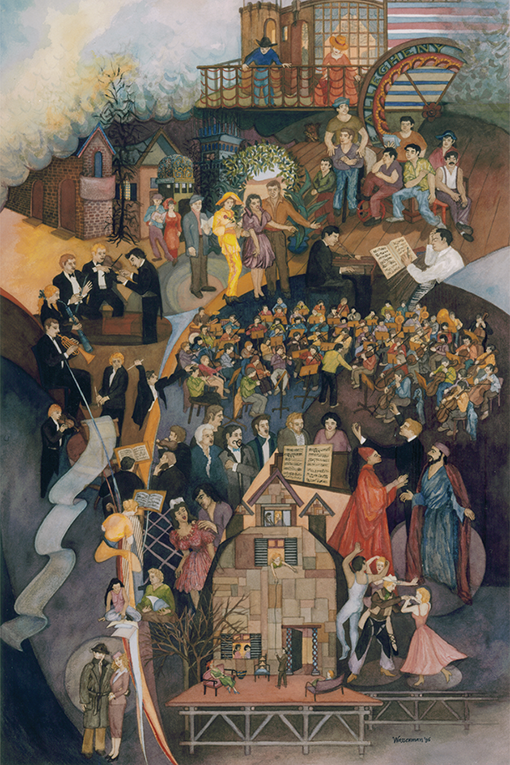
Voices of the
Performing Arts
Theatrical + musical
stage performance settings
for the art of the composer, musician, lyracist + the singer-songwriter; the playwright, author, actor, choreographer, dancer, et alia
Modern illumination, 1996. Watercolor painting
38 x 54 inches, framed
Radio-telegraphy
and
Radio-telephony
19th + early 20th century
inventions that made
broadcasting
possible
Public Airwaves
Modern illumination
1992. Black watercolor
38 x 51 inches, framed
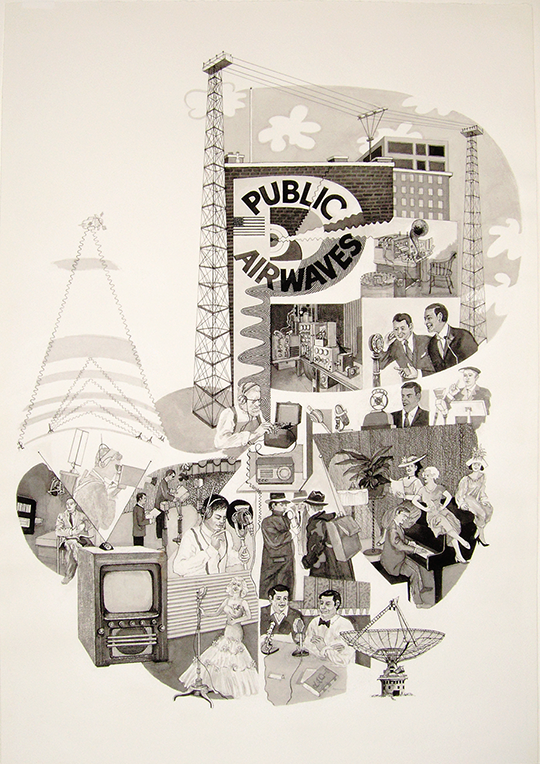

In the early years of the nation, people conveyed their goods and themselves using horse power
and other carriage pack animals. Riverboats carried freight on waterways including man-made canals, while ocean vessels
travelled coastal long distances
+ between continents
Transportation
Modern illumination. 1992
Black watercolor painting
34.5 x 46 inches, framed
Ever-recurring
+ also changing tools
of person-to person
correspondence +
the technologies for
mass communications
Crossroads
of
Communications
Modern illumination. 1994
Watercolor painting
39 x 50 inches, framed
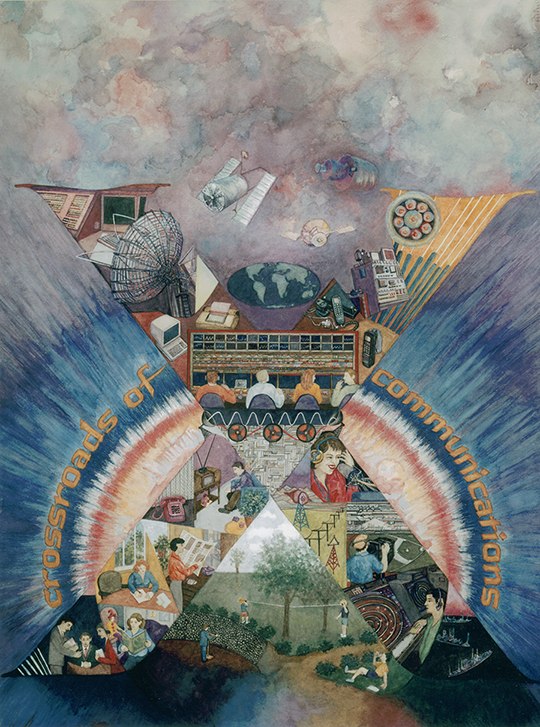
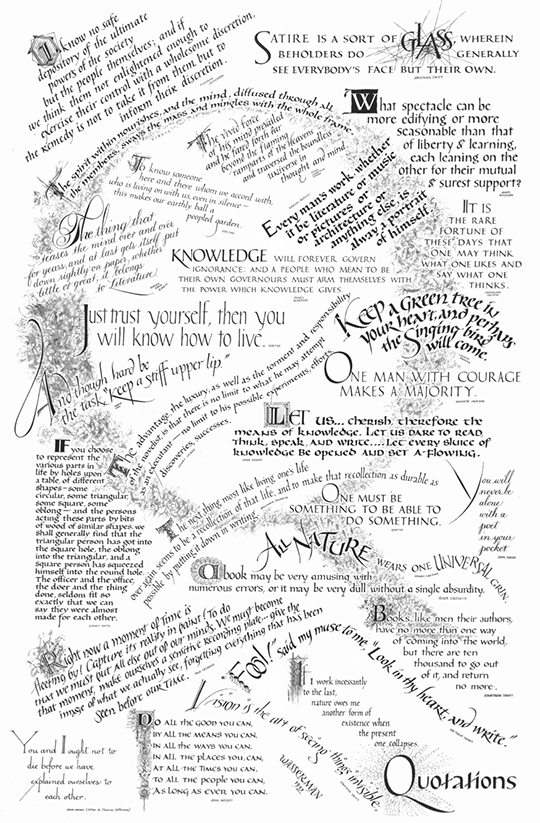
Why do words matter?
Quotations
Calligraphy painting. 1992
Sumi ink + Black watercolor
39 x 55 inches, framed

Calligraphy title art. Writing
on paper using pointed nib pen
and India ink: 18 x 8 inches
On nature's
forms which inspire
human works
of creation
Nature In Art
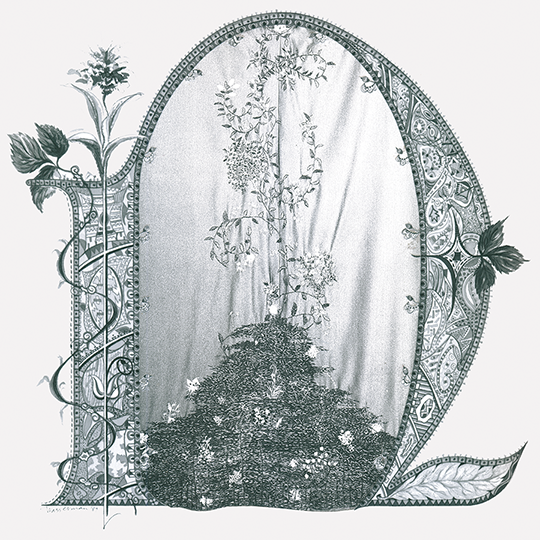
My embroidery (mounted duotone photograph)
Black watercolor painting. 1989
34 x 35 inches, framed
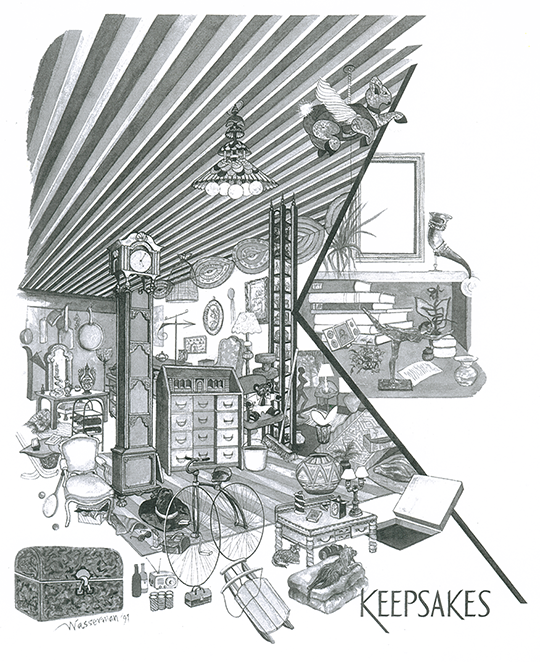
Each
person's real life,
living, memory,
and contemplation
Keepsakes
Modern illumination
1991. Black watercolor
35 x 41 inches, framed
Repositories of
knowledge situated in
our communities
nationwide
Library
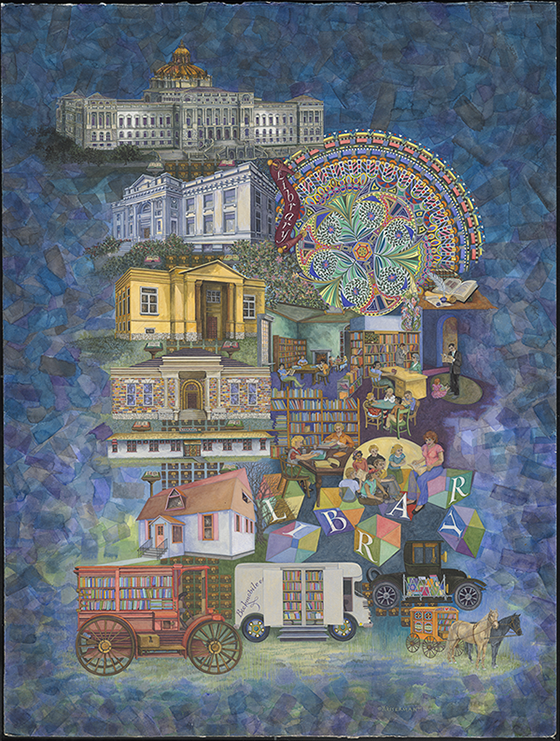
Modern illumination. 2011
Watercolor painting
41 x 50 inches, framed
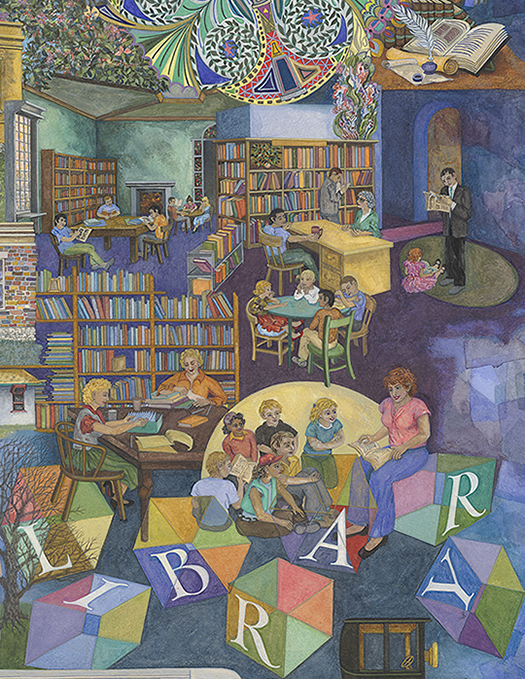
Library
(section: detail)
Reading domains:
wonder-filled settings
of safe haven for
enquiring minds
Encouraging the fertile imagination to
see the possible
Games
Modern illumination
1991. Black watercolor
38 x 48 inches, framed
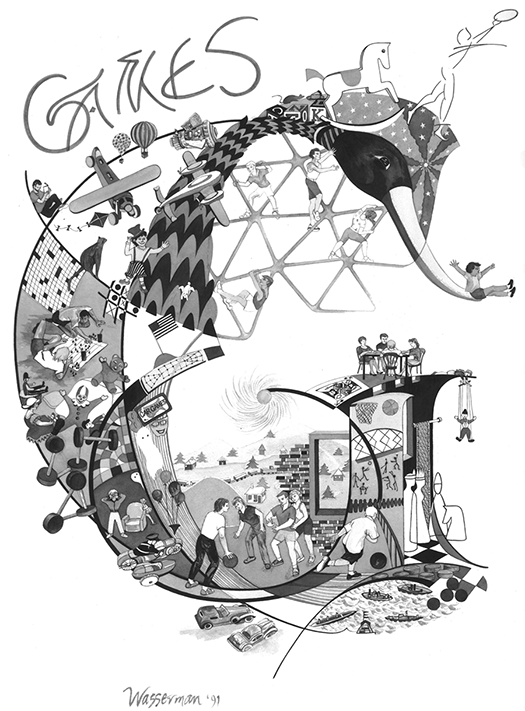
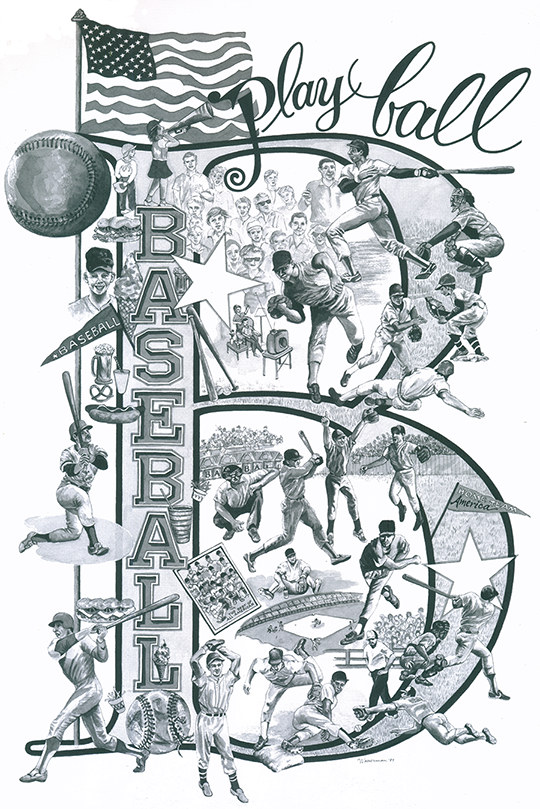
Athleticism
+ artistry expressed
in creative performance
of an American sport
Baseball
Modern illumination. 1989
Black watercolor painting
33 x 44 inches, framed
U. S. Olympic Teams
Athletic beauty
demonstrating
excellence
+ invention
in action
Modern illumination
1988. Black watercolor
38 x 44 inches, framed
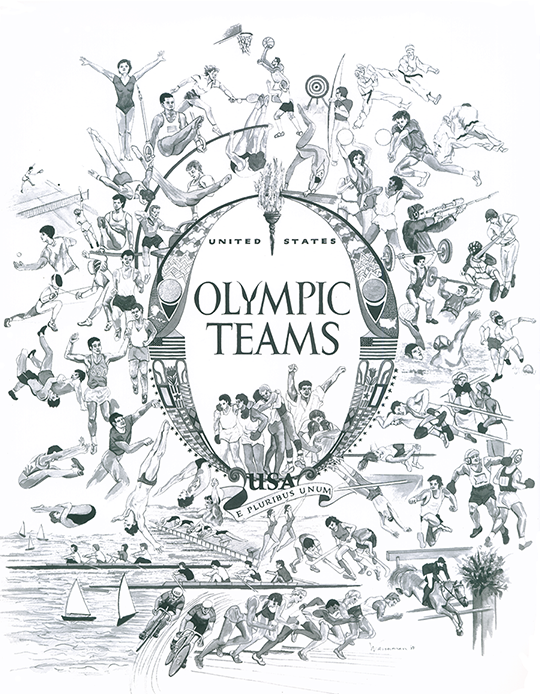
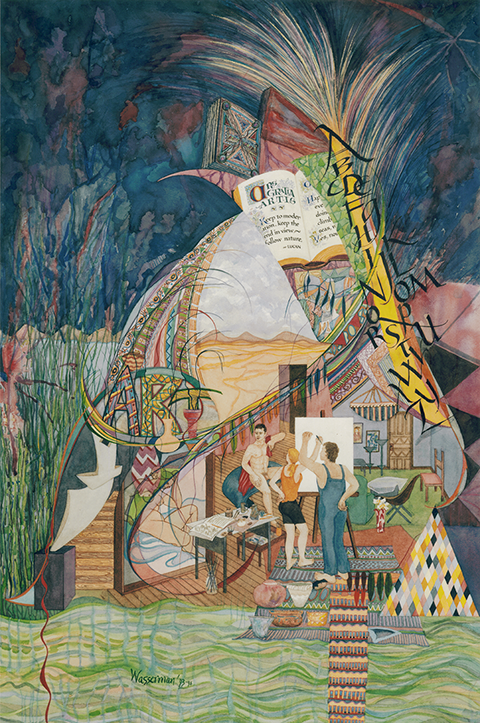
Visual
creation realms
Art
Modern illumination
1993. Watercolor painting
39 x 53 inches, framed
Originating
in African American
musicianship, composition, heritage artistry
Jazz
Modern illumination. 1988
Black watercolor painting
33 x 50 inches, framed
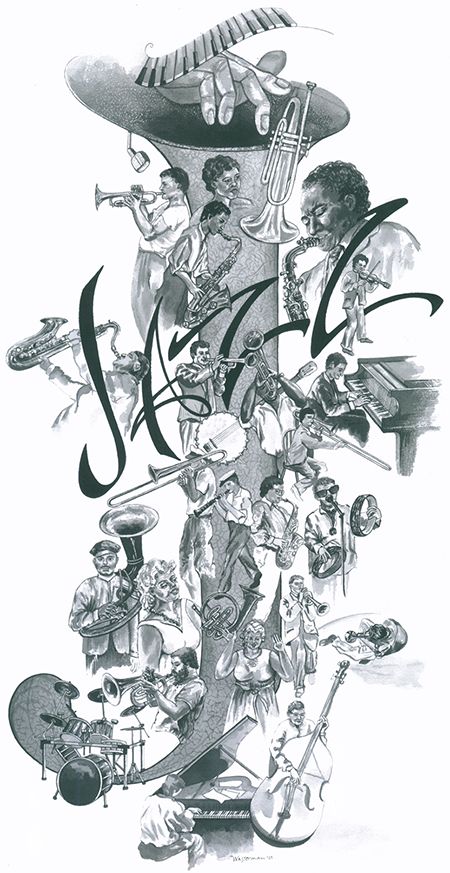
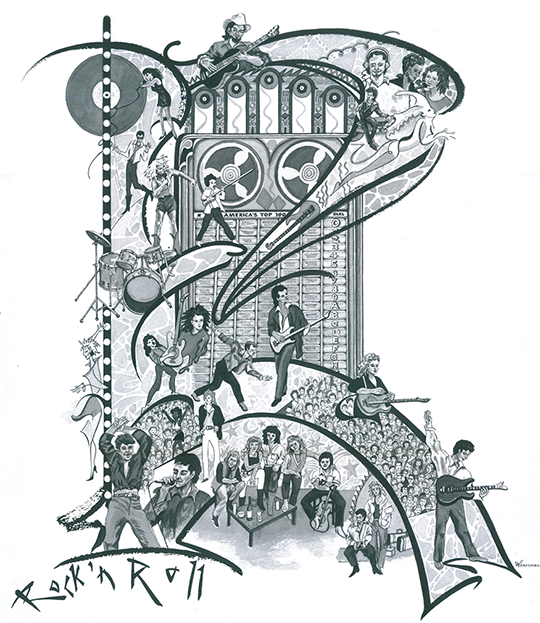
Rock 'n Roll
Musical creations
of contemorary popular music
from the 1940s and 1950s,
weaving individualistic
instrumental sounds, + poetry
+ story verse into existing
folk-singing styles
Modern illumination. 1989
Black watercolor painting
35 x 40 inches, framed
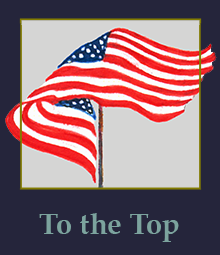 jcw@wassermandesign.com
jcw@wassermandesign.com